You love pizza – whether it’s deep pan, thin and crispy, New York style, or Sicilian. They all combine delicious dough, cheese, and tomato flavors. But you’ve heard of a new term and are unsure what it means.
Perhaps you’ve seen it on a pizza menu and wondered what it was. So what is clean-cut pizza?
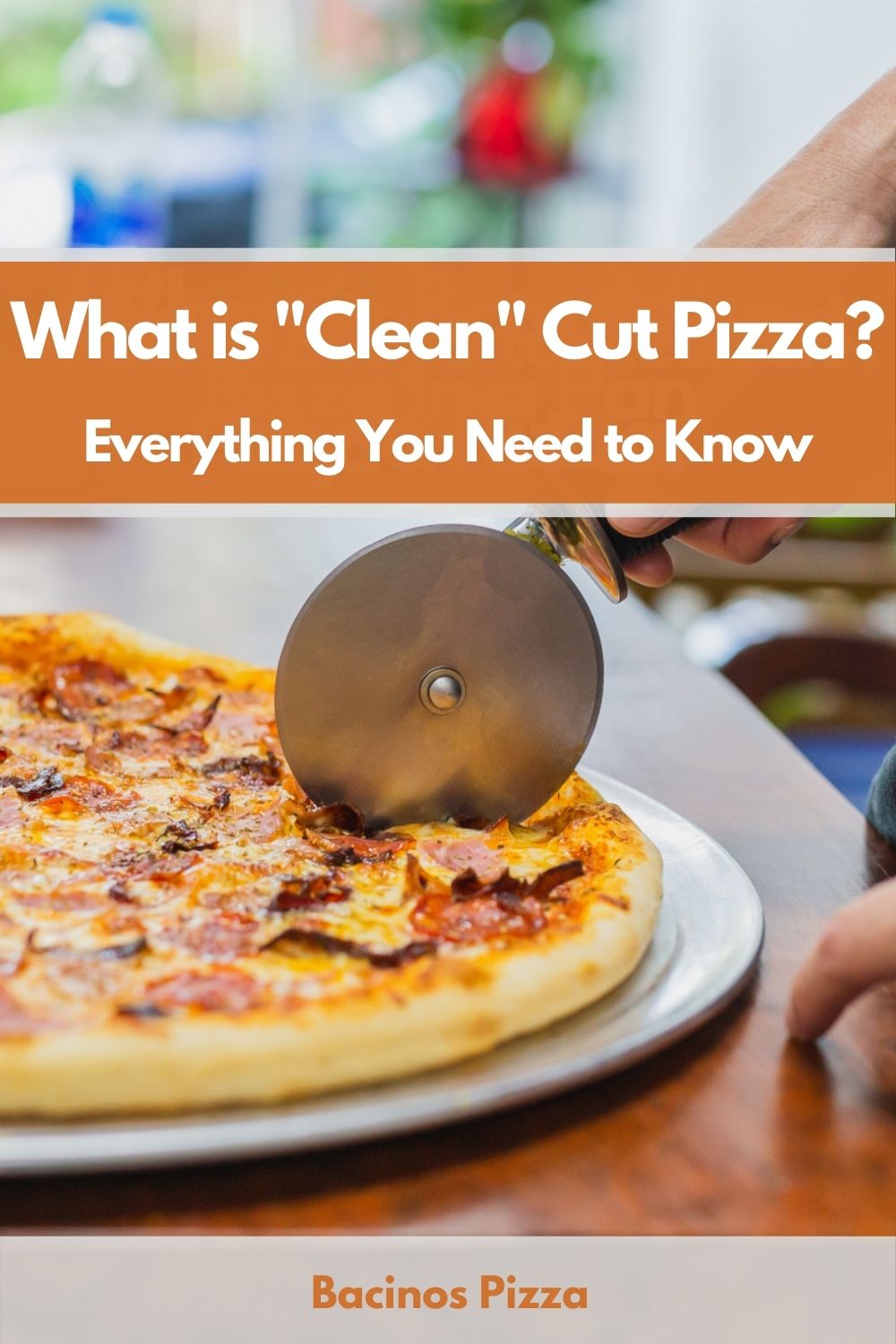
If you’ve been baffled, don’t worry – you’re not alone! We’re here to uncover the mystery of clean-cut pizza. What is it? Why do you need to know about it? And what does it mean for your pizza-eating habits?
If you’re ready to find out, read on!
What Is Clean Cut Pizza?
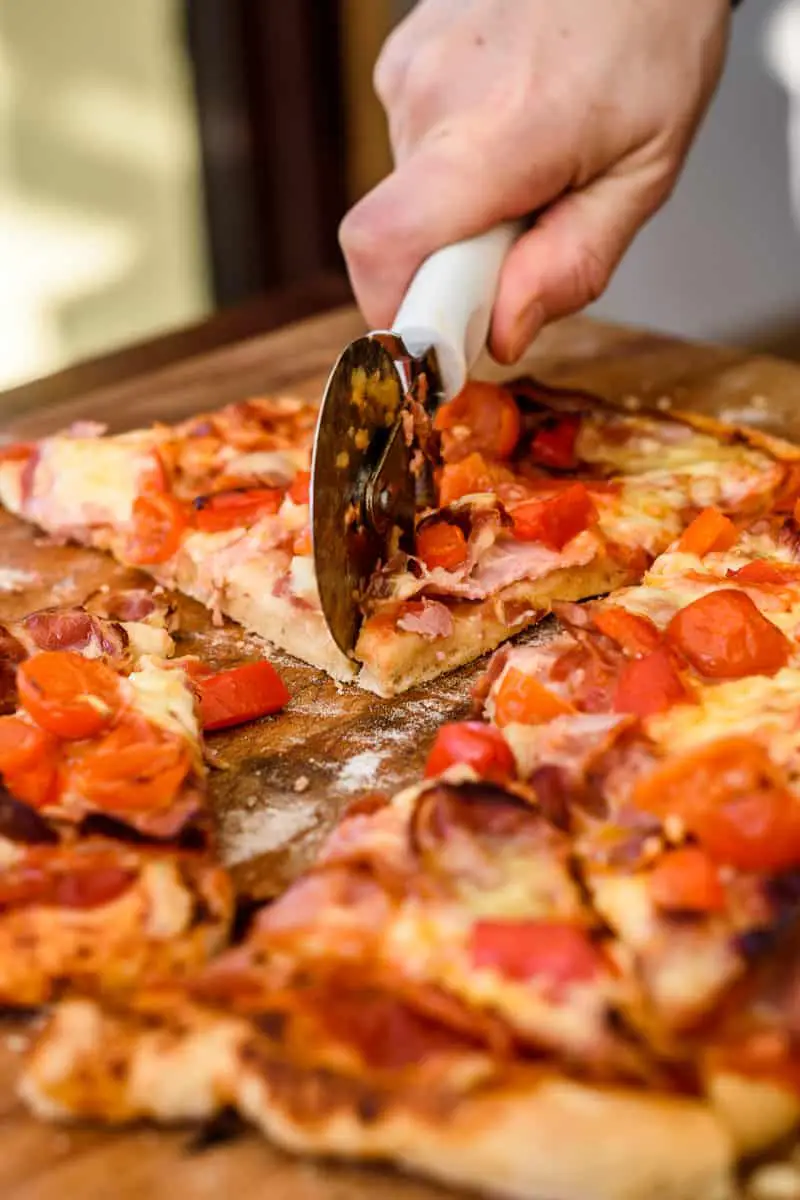
“Clean cut” doesn’t refer to the pizza’s shape or the method of its preparation. You can have a clean-cut pizza in any style or flavor. Instead, it’s about what happens to the pizza after it’s cooked.
A clean-cut pizza is one where the pizza cutter – also known as a pizza wheel – is cleaned immediately before use. It’s an option that many restaurants and takeout chains offer. If you’re thinking that’s standard practice, you’d be wrong! And here’s why.
How Does A Pizza Parlor Prepare Their Pizzas?
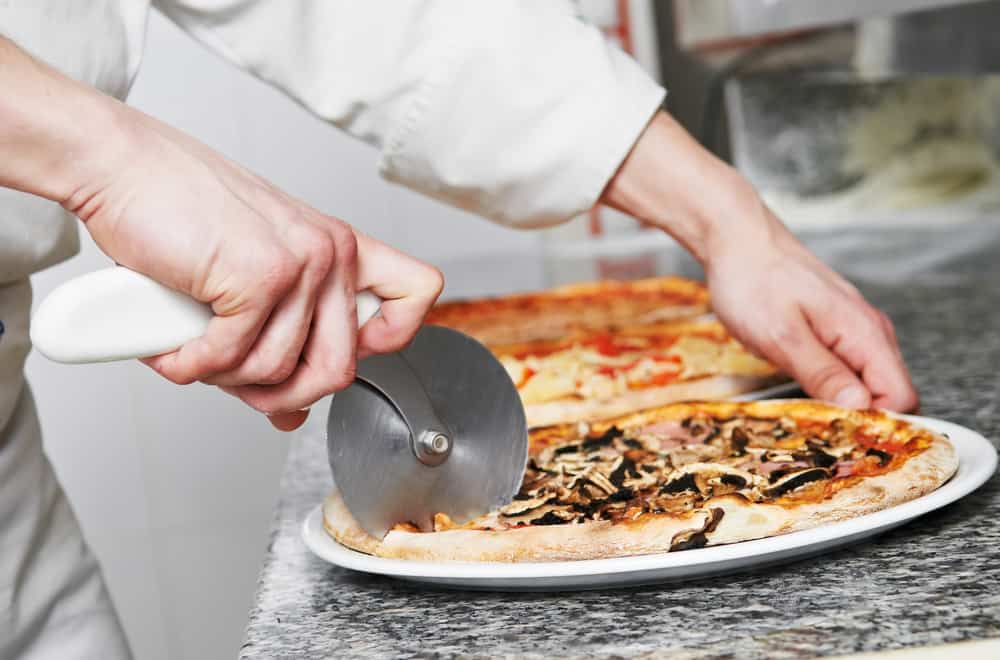
Pizza parlors are a pretty busy place. And most are even busier on Friday and Saturday nights. That means they do everything possible to process orders quickly.
That goes for everything—from pre-folding takeout boxes to pre-measuring dough and chopping the toppings in advance.
And when the pizzas come out of the oven, they need to be ready for delivery or service as fast as possible. The last job before the lid goes onto the box or the plate is to slice the pie.
And in most cases, that will be done using the same conveyor belt approach as the rest of the pizza assembly.
When a pizza gets cut, the pizza wheel will (usually) pick up oil, cheese, and tomato sauce from it. Those sticky substances aren’t particularly easy or quick to clean. So whoever is designated to do the pizza cutting will usually move from one pizza to the next.
Is There Any Point To Clean-Cut Pizza?
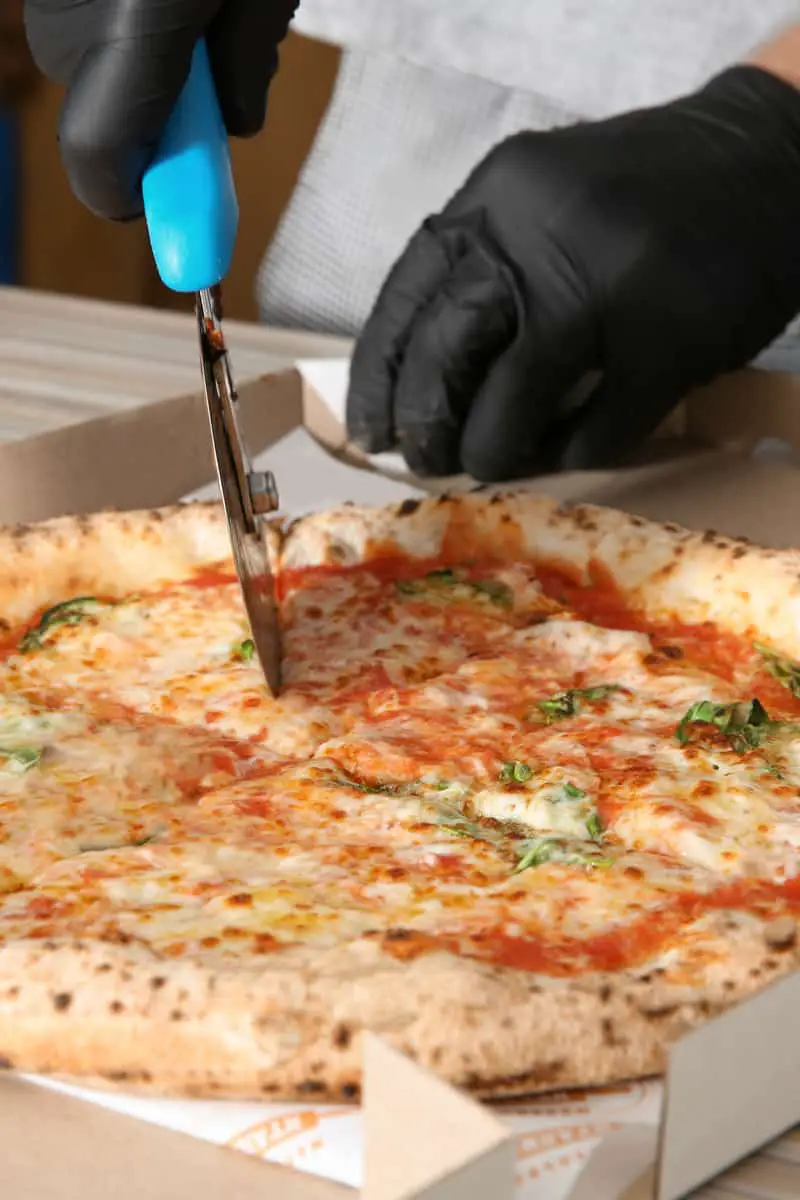
Although this might not sound particularly hygienic, in practice, it won’t be a big deal for most people. After all, the blade of the pizza wheel will only be coming into contact with the cooked pizza. The oils, cheese, and sauce that stick to it are not raw. So they should be germ-free.
It’s not so different from any other utensil in a commercial kitchen. After all, if you order soup in a restaurant, they use the same soupspoon to serve up multiple bowls.
But of course, when it comes to pizza, there are likely to be variations between the pies. Let’s return to our soup analogy. It’s unlikely a chef would use the same soupspoon to serve chicken soup as he would serve leek and potato.
And vegetarians might not be pleased if their leek soup gets contaminated with chicken.
The same principle applies to pizza. Vegetarians might never know that the cutter used on their pizza also serves to cut through a meat-topped pie. But they might as well prefer to eliminate the possibility by asking for a clean-cut version.
Similar considerations may apply to people with particular religious beliefs. For example, Muslims ordering a halal pizza wouldn’t want it coming into contact with non-halal meat. And many other religions have rules about what kind of food can be eaten by their followers.
And for those people with food allergies, knowing what’s on their plate is very important. For them, the possible chances of transferring allergens into an allergen-free pizza could be downright dangerous.
The Health Implications Of Clean-Cut Pizza
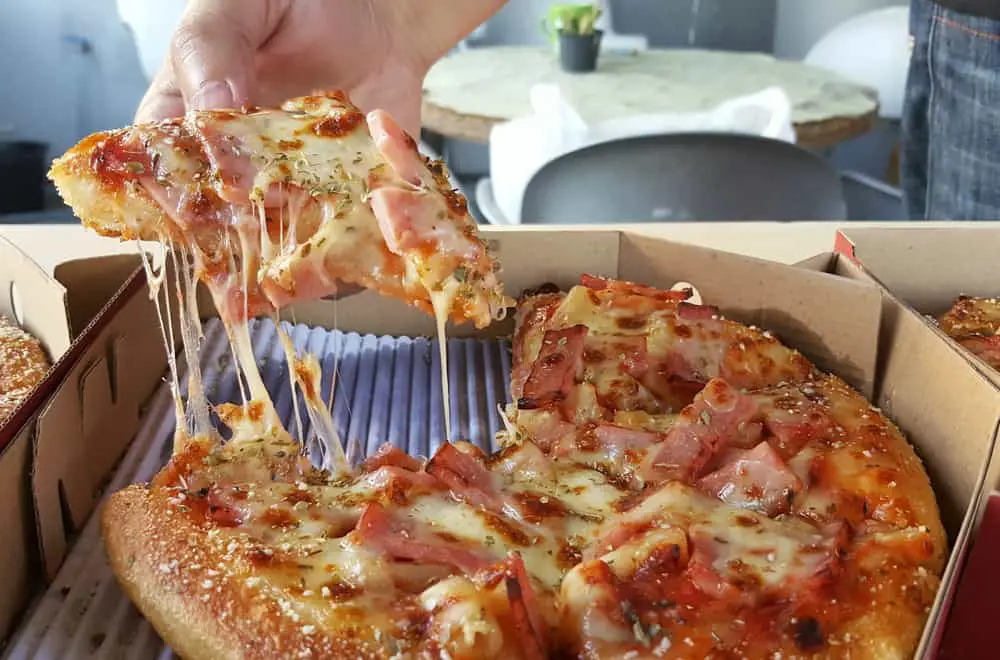
We’ve already seen that clean-cut pizza can be vital to diners with severe allergies. But what about the rest of us?
Well, taking extra care with hygiene certainly isn’t causing you any harm. At a time when we’re all getting used to washing our hands more regularly, washing our cooking utensils more often, too, makes a lot of sense.
It’s another hygiene practice that can reduce germ transmission, which benefits everyone.
What About Different Kinds Of Cut?
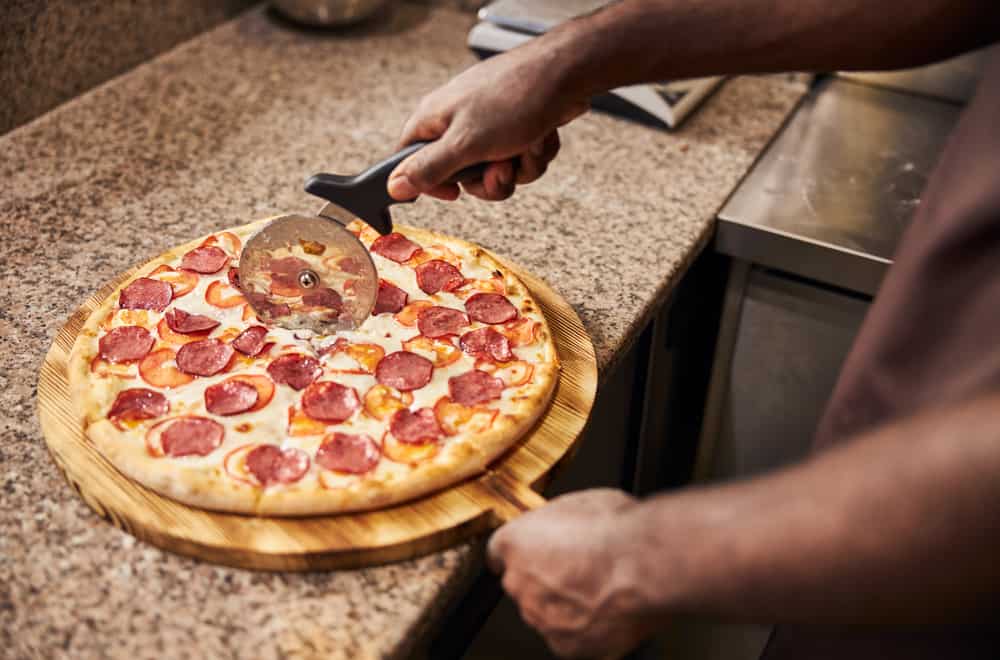
Clean-cut pizza, as we’ve seen, is about the cutting utensil and not the pizza. But you may also have heard of some other kinds of cut. A few on the list are normal-cut, square-cut, and no-cut.
So what are these? And what, if anything, have they got to do with clean-cut pizza?
1. The Normal Cut
Normal-cut is by far the most common for round pizzas. Here, the pizza slices into wedges that radiate out from the center. The number of cuts usually depends on personal preference or standard restaurant practice. The bigger it is, the larger each slice will be. And usually, more of them there will be cut into each pizza.
The normal cut is an integral part of the experience of eating New York-style pizza. You’ll be served your pizza as a single triangular slice. And you’ll fold that slice in half to eat it.
You can, of course, request your normal-cut pizza to be clean cut too.
2. The Square Cut
The square cut applies to pizzas prepared on rectangular plates. The classic Sicilian pizza is an excellent example of this. It’s cut into either squares or long rectangles for serving.
But it’s also possible to cut round pizzas in this way. It’s not common, and most likely, you’ll get odd looks if you ask for it in your pizzeria. But if you do this, there’s no reason you shouldn’t ask for a clean cut too.
The square cut is, however, more often employed by catering firms preparing finger food for buffets. It allows a large round pizza; cut into smaller, manageable pieces. These will be easier for guests to eat while standing and chatting.
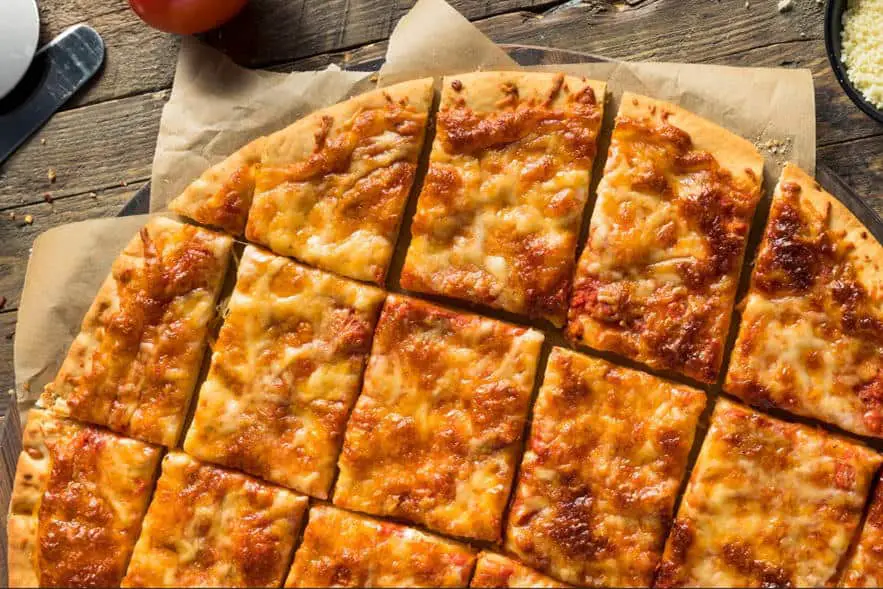
3. The No Cut
The “no cut” pizza is just about what you’d expect from the name. It comes whole and not sliced by the restaurant. That may be a good choice for a couple of reasons.
The first is similar to the case for a clean-cut pizza. You may prefer to ask for a no-cut pizza if you have severe food allergies. That way, you’ll know there’s no risk of a pizza cutter transferring allergens into your food.
The same may apply if you have ethical or religious reasons for avoiding particular foods.
But we’ve also heard of people choosing a no-cut pizza to create their cuts! For example, if you’re catering for a toddler’s birthday party, you might want to consider stars or other shapes. A no-cut pizza allows you to get creative with cookie cutters. Or even hone your knife skills!
Getting The Best Results When Cutting Your Pizza
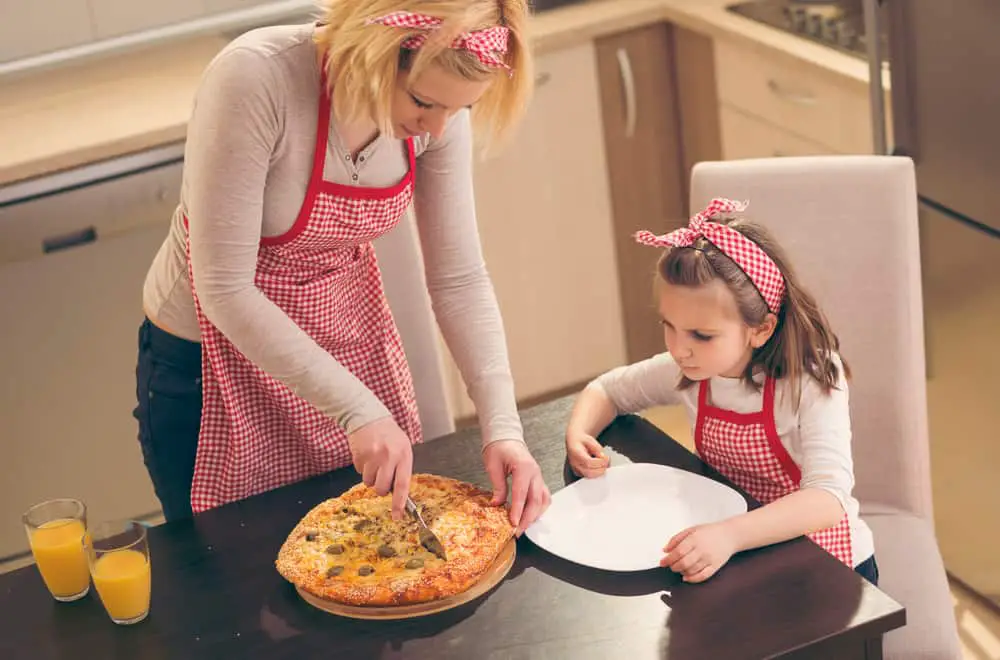
If you’ve opted for a no-cut pizza or baked your own at home, you’ll need to slice it yourself. But most of us have had the experience of breaking the crust or ending up with uneven slices! So how do you go about getting the perfect cut?
The most important aspect is to start with a sharp, clean blade. Pizza cutters, just like other knives, need regular sharpening. That will ensure they slide cleanly through the melted cheese.
Getting good results also means cutting your pizza at the right time. And if you’re using a superior, sharp pizza cutter, that means cutting your pizza the minute it comes out of the oven.
But we don’t all have pizza cutters in our kitchen. If you don’t, you’ll need a long knife – ideally, one that’s as long as the diameter of the pizza.
If you’re using a knife, wait for a few minutes after removing the pizza from the oven to cut it. That will give the topping time to cool down a little. And that will make it less likely to stick to your knife blade.
You don’t need to wait like this if you’re using a pizza cutter because the rotating blade will help minimize how much melted cheese sticks to it.
But if you’re cutting your pizza with a knife, best to get the technique right. Press straight down into your pizza, then rock the blade back and forth. It will be much more effective than a sawing motion.
And if you need to, remove the blade entirely before performing a second cut. Wipe the knife lightly with some kitchen paper first. It will help keep it moving freely. AAlso, be careful while doing this to avoid injuring your hands.
Frequently Asked Questions
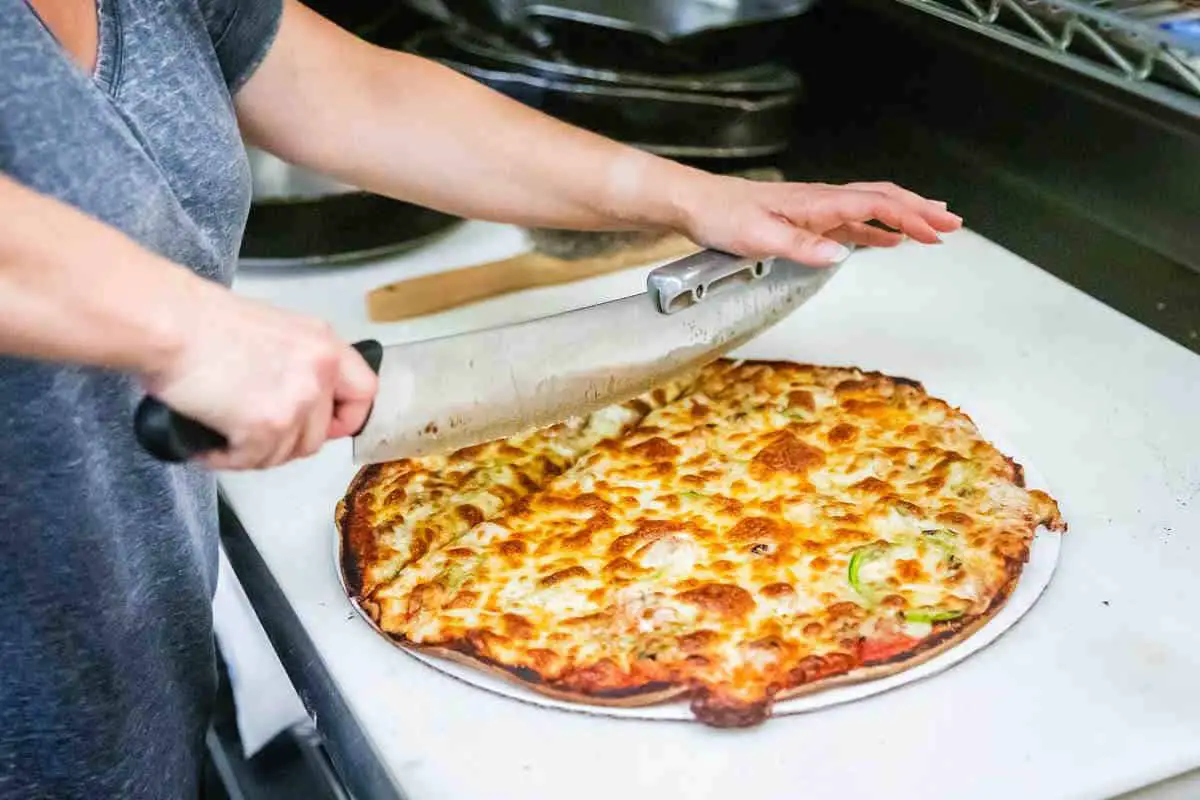
Why do some pizzerias cut pizza with scissors?
It may sound inefficient, but many Italian pizzerias use kitchen shears to slice pizza. And if you think it’s a trend? You’re mistaken, as it’s already rooted in tradition for years in Italy. Cutting through the pie with a shear helps you customize the shape without ruining the toppings.
What is the ideal way to slice a pizza?
According to mathematicians, the best way to cut a pizza is with the monohedral tiling approach. It provides equal sizes, but that does not guarantee it wouldn’t be all crust. So for me, the best slice is still the traditional triangular cut. It is easy to do and offers you the balance of crust and center.
What is the best alternative if you don’t have a pizza cutter?
Many recommend a large chef’s knife since it’s close to a mezzaluna. Its size is also enough to cover the pizza’s circumference, giving you a clean finish. But as I mentioned before, if you choose to use it, ensure that you wait for the pizza to cool before cutting.
How do Italian pizzerias cut their pizza?
Since most of the pizzas in Italy are in personal size, they let you slice the pizza yourself. Yes, the pizza comes to your table whole. You can cut it with a fork and knife and fold it with your hands before taking a bite. They do this so the pizza holds its shape and toppings when lifted.
Should you cut pizza while hot or cool?
That depends on the cutting tool you’re using. If you’re using a sharp pizza cutter, you can slice it right out of the oven. But if you’re using a shear or a knife, best to wait for a few minutes until the cheese and toppings settle down on the crust. That way, you won’t mess with the ingredients and ruin the pizza.
Now You’re An Expert In Clean Cut Pizza!
We hope you’ve enjoyed our tour of everything there is to know about clean-cut pizza! Whether you have allergies, religious or ethical considerations, or merely care about food hygiene, it’s the perfect option.
Just remember that ‘clean cut’ refers to the cleanliness of the pizza cutter, not the style in which the pizza is cut. That’s where serving styles like standard, square, and no cut come in.
Whether you choose clean-cut or not, we hope you enjoy your next pizza!
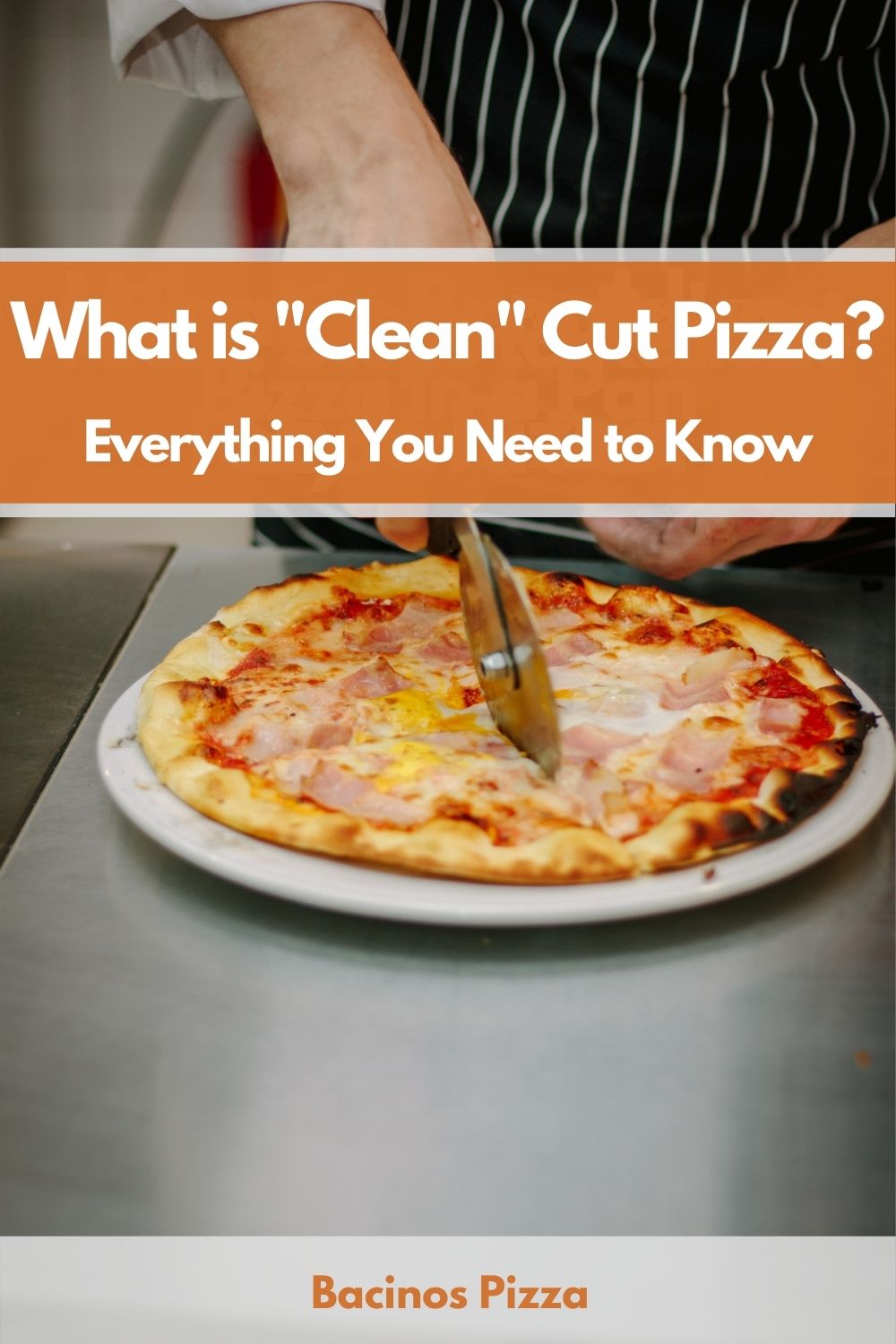

Barbara is an enthusiastic food-exploring person that goes through different culinary experiences. She got inspired by creating a pizza blog post after she tasted one of the best-selling pizzas in Toledo.
I would actually like to state that it would be completely unhygienic to use the same cutter because it creates a food bacteria risk. Once the temperature of any meat or cheese reaches below 140 degrees Fahrenheit all the way down to 40 degrees it is the danger zone for creating and spreading bacteria into other pies even if they are hot. The pies are out of the oven and too cool to kill off bacteria transferred from the cutter by the time they are cut. And the cutter itself will cool fairly quick even with food residue attached. Causing any food particles left on it to cool quickly to room temperature and within 30 minutes bacteria can start to grow. Most of this is pretty basic food safety knowledge in the food service industry across the US. As someone who has worked in food service for 4 years, I would confidently say that this is not best practice for food safety and ideally cutters should be swapped, washed, rinsed, and sanitized every 30 minutes.